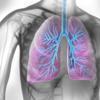What Is Asthma: Get the Facts

Asthma is a lung condition where the lung bronchioles constrict and get filled with mucus, narrowing the passage for air to pass through. It is a non-curable condition. However, the symptoms can be suppressed with proper medication, exercise (as prescribed by the doctor, or else, doing inappropriate exercises can worsen the symptoms), and healthy diet. When you have asthma, you breathe with great difficulty, coughing regularly and produce a wheezing sound with recurring chest pain. The condition is generally brought about by allergens but non-allergenic factors also play an important role.
Almost 25 million men, women, and children are affected by asthma. Although asthma can sometimes be a serious condition, very few people actually die of the disease. To survive, you need regular medication and major lifestyle changes to cope with the symptoms.
Knowing an Asthma Attack
Certain flowers, pollens, dust mites, molds and fungi, food ingredients, dry hot air, or cold dry air can produce allergic reactions in asthmatic people. Basically, the airways of the lungs thicken with sticky mucus making breathing difficult.
Symptoms of Asthma
- breathing becomes tortured and heavy
- pronounced wheezing is accompanied by a rattling chest sound
- a productive cough that is moderate to heavy
- chest tightness with pain
The symptoms of asthma can be triggered by irritants and allergens. Thus, people with asthma need to be careful so that the symptoms can be suppressed. The condition can worsen with the production of sputum from the lungs, which is difficult to cough out. An increased number of white blood cells in the sputum can make it appear like pus during the recovery from an asthma attack.
The symptoms of asthma can get worse due to cold air early in the morning and night. It is possible that some people do not have any symptoms of asthma even when they are exposed to the triggers. On the other hand, some people can have extreme symptoms of the condition. The symptoms tend to get worse in most people with asthma during cold or during other respiratory illness. Although asthma symptoms may vary from mild to extreme, episodes of breathlessness can create a sense of panic to some people.
What causes an asthma attack?
An asthma attack can happen to anyone who has asthma. However, the chances or risk of these attacks increase in people with a past history of severe asthma attacks, usage of more than two inhalers (quick-acting) for managing asthma, and other chronic conditions such as chronic lung diseases, cardiovascular conditions as well as other chronic health problems like nasal polyps or sinusitis.
Unfortunately, we know little about the mechanism that triggers asthma, but we do know that there are certain "triggers" that have the potential to initiate an asthmatic attack.
The Most Common Causes of Asthma
- A history of skin allergy such as eczema, allergic rhinitis, and asthma within the family.
- Childhood development issues such as a weak lung condition or exposure to harmful allergens such as passive smoking.
- Smoking and exposure to allergens in industries and workplaces wherein workers are in close contact with toxic chemicals or radiation.
The Most Common Irritants That Can Trigger Asthma
- cigarette smoke, mold, fungi, and flower pollen
- cold air or hot dry air
- animal hair, saliva, urine, or bird droppings
Nonallergenic Factors That Can Worsen Asthma
- painkillers and anti-inflammatory medicines that inflame the lung tissue
- changing weather conditions worsened by pollutants
- outdoor activities such as jogging and exercising
Is asthma largely confined to children?
- Age is not a barrier and more than 25 million men, women, and children suffer from asthma.
- It costs the nation more than $50 billion in healthcare costs alone, adding another $6 billion for loss of man-days and tertiary expenditure.
- It accounts for 80 percent of all chronic conditions afflicting small children.
- Adults with no evidence of family history are known to contract asthma, which tends to become chronic.
- More adult women than men are affected by asthma, although more men are affected in their early formative years.
How is asthma diagnosed and treated?
Because asthma follows a chronic path and is incurable, its management is a lifelong burden with regular checkups, extended medication, and therapy. The following doctors are specialists who can help treat people with asthma.
- Pulmonologist - is a lung specialist who conducts a lung function test that shows clearly how far COPD, asthma, or cancer have affected the lung tissues, and how the tissues can efficiently transfer oxygen and carbon dioxide.
- Allergist - is a specialist that diagnoses and treats asthma and other allergic reactions or conditions. An allergist will also probe for clues in your family history such as eczema and rhinitis.
- Immunologist - is a doctor who specializes in managing disorders in the immune system, which include a variety of allergies, asthma, and autoimmune diseases.
- Radiologist - is a type of doctor who specializes in the diagnosis and treatment of diseases by using imaging tools such as X-rays, sonography, CT scans, and PET scans. A radiologist will determine the structural damage that a certain condition has created, which will help other physicians to come up with the most appropriate treatment regimen.
Controlling Asthma Attacks
Although asthma has no cure, there are ways to control its symptoms. People’s immune responses vary differently when it comes to asthma. That is why it is always recommended that you see your doctor to come up with a treatment plan that is tailored for you. A treatment guideline usually has details about the allergens that can trigger your asthma as well as instructions on how to manage the attacks through medications.
Although there are pills for asthma, most of the time, asthma medications are inhaled using a nebulizer or an inhaler. These devices allow the asthma medicine to go directly into your lungs.
Inhalers or commonly referred to as “puffers” come in two different types. They are:
- Metered-Dose Inhalers - is a pressurized type of inhaler that delivers a specific amount of medicine to the lungs.
- Dry Powder Inhalers – are inhalers that deliver asthma medications in dry powder form. Unlike the metered-dose, medication in dry powder inhalers can only be released when an individual takes a deep breath through the device.
Nebulizers
A nebulizer is a device that is used for the delivery of medications in the form of a mist. It has a tubing, which converts medicine in liquid form and turns it into a mist that people can inhale. If people are having a hard time using inhalers or puffers, they can use a nebulizer instead.
The Bottom Line
Asthma is a classic example of a short-term disability but creating a long-term burden in terms of expensive healthcare costs and tertiary care. To combat the symptoms of asthma, the best options are those that involve lifestyle changes such as quitting cigarette smoking and eating a nutritious, healthier diet that is free from allergens.
Asthma is a serious condition that can influence or interrupt activities of daily living including sleep patterns, exercise routine, work, and studies, thereby, having a great impact on the quality of life of the person who has asthma. If a person gets serious attacks of asthma, then he or she needs to be taken to the emergency care unit more a frequent monitoring, which makes it expensive and stressful for the family and friends. If not treated properly, a severe asthma attack can cause a respiratory arrest or even death.


![What Could Cause Wheezing? [Infographic]](https://www.findatopdoc.com/var/fatd/storage/images/_aliases/small_square/top-videos-and-slideshows/what-could-cause-wheezing/539298-1-eng-US/What-Could-Cause-Wheezing.jpg)













